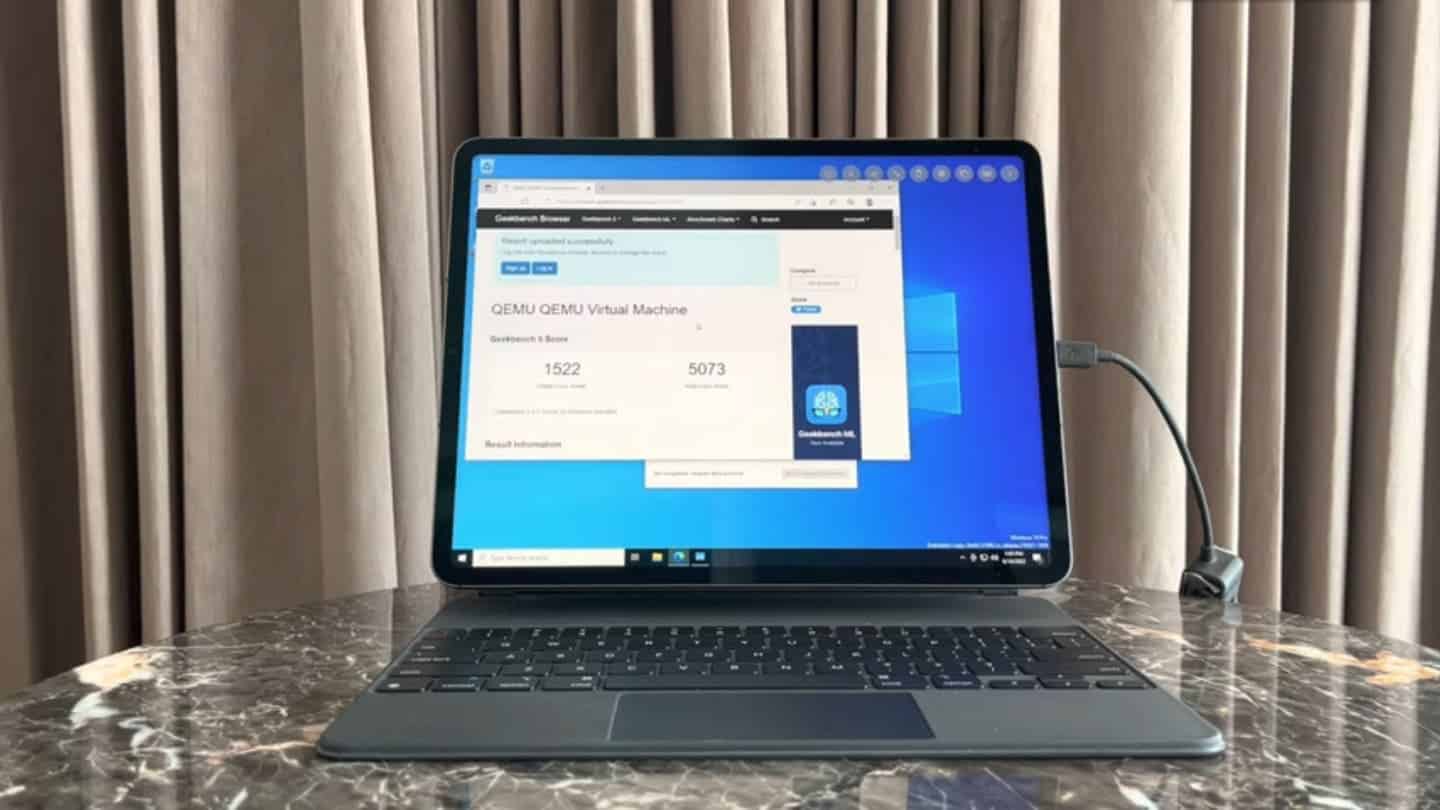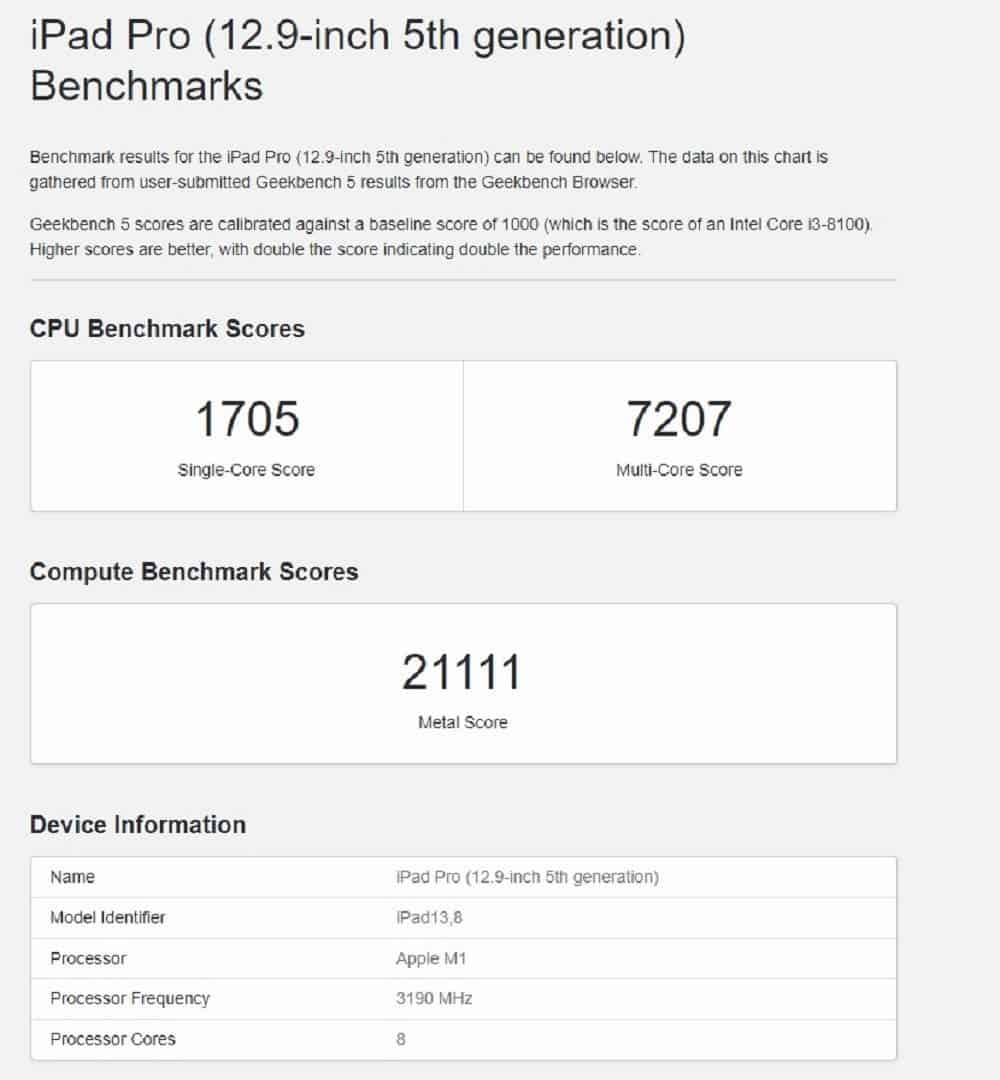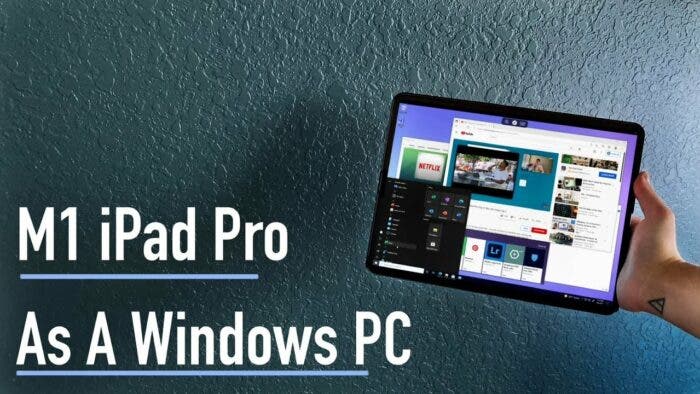Recently, some bloggers showed their results of running the Windows 10 operating system on the iPad Pro with the M1 chip.
While running successfully, the blogger also conducted a benchmark test through Geekbench. The score shows that the iPad Pro scored 1522 points for single-core and 5073 points for multi-core under Windows 10. Which has basically reached 90% and 70% of the M1 iPad Pro performance on iPadOS. This is enough to consider them “running at full speed”.
We should note that the blogger did not directly flash the iPad Pro into the Windows 10 system. But relies on the virtual machine to complete the operation.

Windows 10 works great on the M1 iPad Pro
The virtual machine, called UTM, is based on QEMU technology and can allow users to run Winodws or linux systems on iPhone or iPad without jailbreaking, and is currently compatible with macOS.
According to the official information given by UTM, this virtual machine supports a total of more than 30 processors including x86_64, AMR64 and RISC-V and other architectures to support the use of systems of iOS 11 and above.
At the same time, the virtual machine supports external keyboards, mouse, touchpads, Apple Pencil, controllers and other devices, which can extend the operating experience of the system itself to the greatest extent.
Gizchina News of the week

While the majority of high-end tablets are getting OLED or AMOLED screens, Apple’s iPads are still using LCDs. That could soon change, though, since fresh information suggests that the Cupertino business intends to release the iPad with OLED technology as early as 2023. Importantly, it is now anticipated that Apple would use a hybrid type of screen, which has a substantial benefit.
The first OLED iPad (Pro) from Apple will reportedly include a hybrid OLED display. Rather than the standard design used in the majority of smartphones and Android tablets, according to The Elec. The technology will mix flexible and stiff panel technologies to prevent the warping problem. This is common in bigger devices with panels larger than 10 inches.
Since OLED technology is still under development. There is less likelihood that the OLED iPad or MacBook Pro will launch during the presentation next month. The earliest we may anticipate it to be ready is possibly early in the next year. Although it may still be dependent on the display’s developers, Samsung, LG, and BOE.

